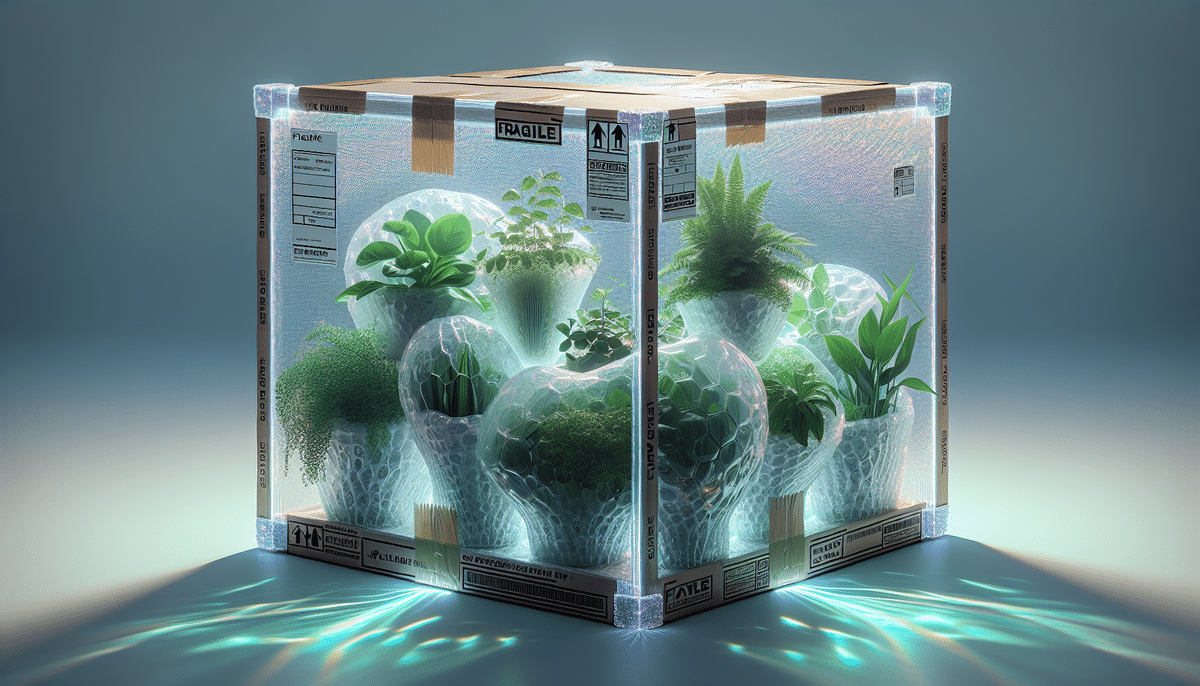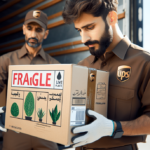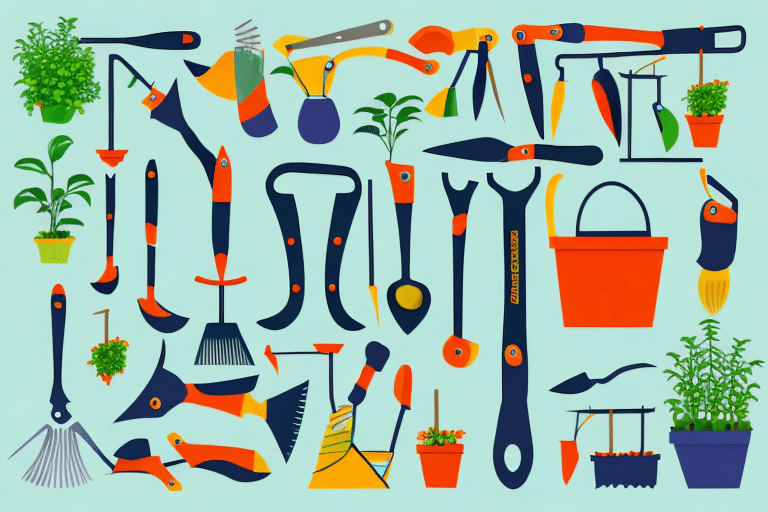How to Safely Ship Plants: A Step-by-Step Guide
If you’re an avid gardener or plant enthusiast, you know how important it is to keep your beloved plants healthy and happy. However, there may come a time where you need to ship your plants – whether it be to a friend, family member, or customer. Shipping plants can be a tricky process, but with the right knowledge and materials, you can ensure that your plants arrive at their destination safe and sound. In this guide, we will go over everything you need to know about how to safely ship plants, step-by-step.
Why Proper Plant Packaging is Important for Safe Shipping
Before we dive into the specifics of how to ship plants, it’s important to understand why proper plant packaging is crucial for safe shipping. Plants are delicate and can easily become damaged or stressed during transportation. Without the proper packaging, plants may experience a myriad of issues such as dehydration, leaf damage, or even death. To avoid these mishaps, it is important to package your plants carefully and securely.
One of the main reasons why proper plant packaging is important for safe shipping is to protect the plants from extreme temperatures. During transportation, plants may be exposed to hot or cold temperatures that can cause damage to the leaves, stems, and roots. By using appropriate packaging materials such as insulated boxes or heat packs, you can ensure that your plants remain at a consistent temperature throughout the shipping process.
Another reason why proper plant packaging is important is to prevent the spread of pests and diseases. Plants that are not properly packaged can easily become infested with insects or infected with diseases during transportation. This can not only harm the plants themselves but also pose a risk to other plants in the area. By using appropriate packaging materials and following proper sanitation procedures, you can help prevent the spread of pests and diseases and ensure that your plants arrive at their destination healthy and safe.
Choosing the Right Shipping Container for Your Plants
The first step to safely shipping plants is selecting the right container. Depending on the size and type of plant you’re shipping, there are a variety of containers to choose from. For smaller plants, you may opt for a cardboard box with ventilation holes. For larger plants, you may need to invest in a specialized plant shipping box with additional reinforcements and handles. It’s important to note that the shipping container should be sturdy enough to withstand any drops, bumps, or jostling during transportation. Another important factor to consider when choosing a shipping container for your plants is the climate and weather conditions during transportation. If you’re shipping plants during extreme temperatures, you may need to invest in insulated containers to protect them from heat or cold. Additionally, if you’re shipping plants internationally, you may need to comply with specific regulations and requirements for shipping live plants.
It’s also crucial to properly label your shipping container with clear and accurate information. This includes the name and address of the recipient, as well as any special handling instructions for the carrier. Proper labeling can help ensure that your plants arrive at their destination safely and on time.
How to Prepare Your Plants for Shipping
Before you even begin the packing process, it’s important to prepare your plants for shipping. This includes thoroughly watering your plants and trimming any dead or damaged leaves. It’s also a good idea to remove any excess soil or debris that could move around during transportation. Once your plants are trimmed and tidy, allow them to dry completely before packaging.
Another important step in preparing your plants for shipping is to choose the right packaging materials. You’ll want to use sturdy boxes that are large enough to accommodate your plants without squishing them. It’s also a good idea to use packing materials such as bubble wrap or packing peanuts to cushion your plants and prevent them from shifting during transit.
Finally, it’s important to properly label your packages clearly and accurately. Be sure to include your name and address as well as the recipient’s information. You may also want to include instructions for handling your plants, such as “this side up” or “fragile.” With these steps in mind, you can ensure that your plants arrive at their destination healthy and intact.
Packing Materials You Will Need to Ship Your Plants Safely
Now that your plants are prepped and ready to go, it’s time to gather the necessary packing materials. You’ll need packing paper, newspaper, or bubble wrap to cushion your plants during transit. You may also need packing peanuts or shredded paper to fill any empty space in the shipping container. Additionally, you’ll need tape to seal the container and labels to mark the shipment as fragile.
It’s important to note that not all plants can be shipped safely. Some plants are more delicate than others and may not survive the shipping process. It’s best to research the specific needs of your plant and consult with a professional before attempting to ship it. Additionally, be sure to check the shipping regulations of your destination to ensure that your plant is allowed to be shipped there.
Step-by-Step Instructions for Packing Your Plants for Shipping
When it comes to packing your plants, it’s important to be meticulous and precise. Follow these step-by-step instructions to make sure your plants are packed securely:
- Water your plants a few days before shipping, allowing the soil to be moist but not soggy.
- Trim any dead or damaged leaves.
- Wrap the base of the plant with damp paper towels to keep the roots moist.
- Secure the rootball with plastic wrap or a plastic bag.
- Place the plant in a sturdy box with cushioning materials like bubble wrap or packing peanuts.
- Fill any empty spaces in the box to prevent movement during transit.
- Seal the box with strong tape and label it clearly with "Fragile" and "This Side Up" instructions.
It’s important to note that not all plants are suitable for shipping. Some plants may be too delicate or sensitive to survive the shipping process. Before packing your plants, do some research to ensure that they can withstand the journey.
Additionally, it’s a good idea to include care instructions for the recipient of the plants. This can include information on how often to water the plants, what kind of light they need, and any other special care instructions. This will help ensure that the plants arrive safely and are able to thrive in their new environment.
Sealing and Labeling Your Shipment: A Crucial Step for Safe Plant Transportation
Sealing and labeling your shipment is a crucial step in the plant shipping process. In addition to labeling the container, it’s important to include your contact information and the recipient’s information in case of any delivery issues. Additionally, it’s a good idea to purchase shipping insurance to protect your plants in case of any damage or loss during transit.
Another important aspect of sealing and labeling your plant shipment is to ensure that the plants are properly packaged and secured. This includes using appropriate packing materials such as bubble wrap or packing peanuts to prevent any damage during transit. It’s also important to make sure that the plants are not overwatered or underwatered before shipping, as this can cause stress and damage to the plants. By taking these extra precautions, you can ensure that your plants arrive safely and in good condition at their destination.
Tips and Tricks for Minimizing Stress on Your Plants During Shipping
Shipping can be a stressful experience for plants, so it’s important to take steps to minimize that stress. One tip is to ship your plants early in the week to avoid any weekend or holiday delays. Additionally, it’s a good idea to ship your plants directly from a post office or shipping center rather than dropping them off at a package drop box. This will ensure that your plants are handled with care and not left in potentially extreme temperatures.
Another tip for minimizing stress on your plants during shipping is to properly prepare them for the journey. This includes watering them thoroughly a few days before shipping, and wrapping the pots in plastic to prevent soil from spilling out. It’s also important to label the package as “live plants” to ensure that they are handled with care and not left in a hot or cold warehouse. By taking these extra precautions, you can help ensure that your plants arrive at their destination healthy and ready to thrive.
Common Mistakes to Avoid When Shipping Plants
Even with the best intentions, it’s easy to make mistakes when shipping plants. One common mistake is not providing enough cushioning for the plants – this can lead to damage during transportation. Another mistake is shipping plants during extreme temperatures. If there’s a chance of frost or extreme heat, it’s best to wait until conditions are more favorable for plant transportation.
How to Track Your Shipment and Ensure Safe Delivery
Once your plants are shipped, it’s important to track the shipment and stay proactive in ensuring safe delivery. Most shipping companies offer tracking services so you can monitor the progress of your shipment. Additionally, it’s a good idea to stay in touch with the recipient and provide them with any necessary information to properly care for the plants upon arrival.
What to Do if Your Plants Arrive Damaged: A Guide to Handling Plant Shipping Mishaps
If your plants arrive damaged, it’s important to act quickly to salvage them. Take photos of the damage and contact the shipping company to file a claim. Additionally, you may need to re-pot the damaged plants and provide extra care to nurse them back to health.
Benefits of Using a Professional Plant Shipping Service
Finally, if you’re shipping a large number of plants or need to ensure a high level of safety and care during shipping, it may be beneficial to work with a professional plant shipping service. These services have experience handling delicate plants and can provide additional care and attention during transportation.
How to Ship Different Types of Plants: Succulents, Trees, Flowers, and More
Lastly, it’s important to note that different types of plants may require different shipping methods or materials. Succulents, for example, may require additional cushioning to prevent breakage. Trees may require specialized shipping boxes and handling. Flowers may need to be shipped in a cooler temperature range to ensure freshness. Always research the specific needs of your plants before shipping to ensure the best possible outcome.
By following these steps and using the appropriate packing materials, you can safely and successfully ship your plants. Remember to take your time and be diligent during the packing process, and don’t hesitate to reach out to professionals if you need additional assistance. Happy shipping!






















